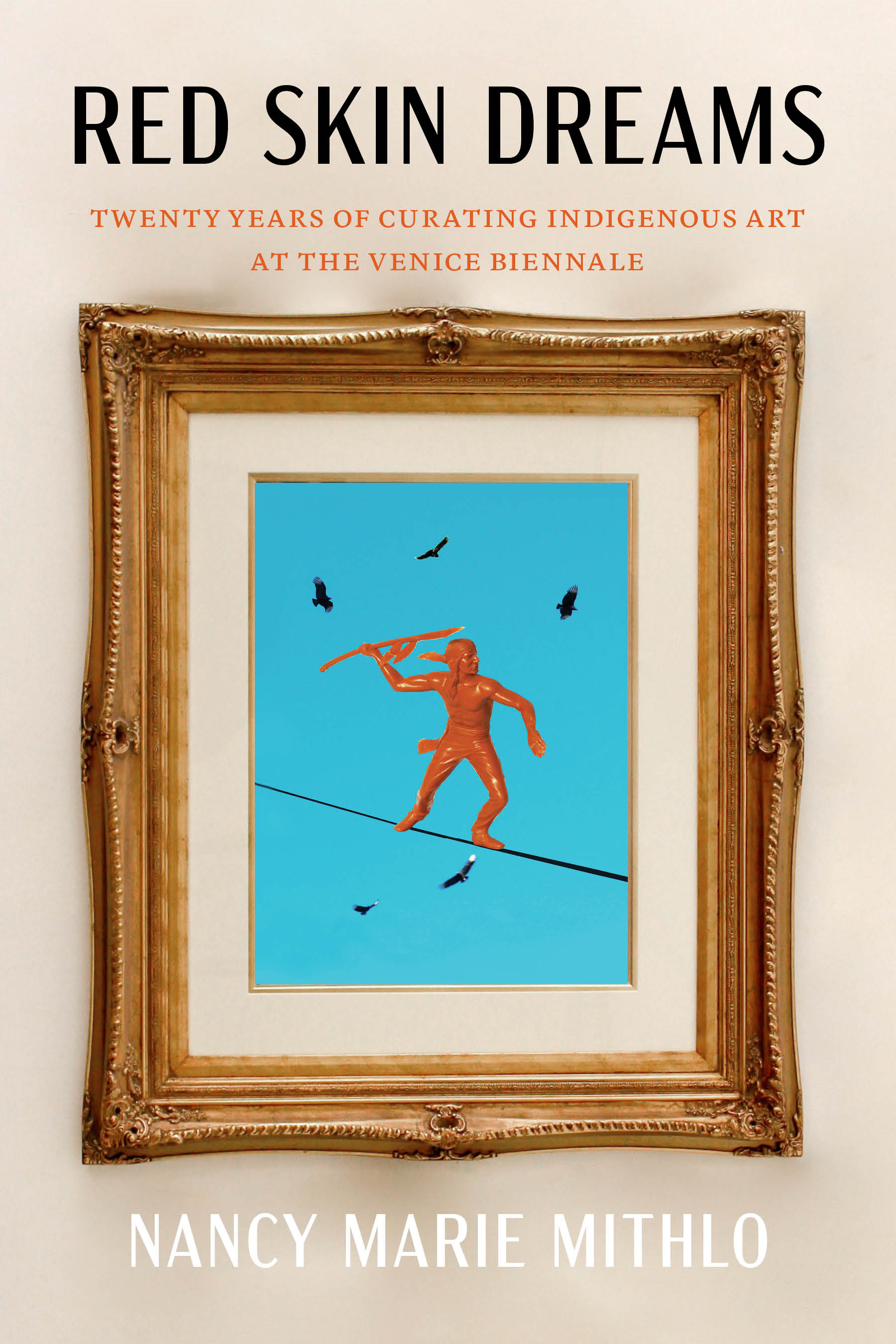
Cover Image: Shelley Niro. The Show Off, digital image, 2017.
Courtesy of the Artist.
“Red Skin Dreams”: Twenty Years of Curating Indigenous Art at the Venice Biennale
University of Nebraska Press, Matt Bokovoy, Senior Acquisitions Editor
PRE-ORDER from University of Nebraska Press HERE
“Red Skin Dreams” documents and theorizes the presentation of contemporary American Indian art exhibits at the Venice Biennale from 1997-2017. The story is conveyed through memoir and storytelling as I document the nine exhibits I helped to lead over a twenty-year period. The improbable and messy business of staging international exhibits that were non-institutional, non-commercial and anti-hierarchical involved collaborators from across the globe—Canada, Australia, New Zealand, Switzerland, England, Norway, Germany, as well as Italy. These connections were made through Indigenous networks, institutions, and relationships, not the prestigious galleries, museums and art collectors that typically decide who is represented and where. Our presence-making exposed the fiction that only those “in the middle of things” had access to exhibition.
PRE-ORDER from Birchbark Books HERE
![]() Instagram page for book @redskindreamsthebook
Instagram page for book @redskindreamsthebook
Anonymous reviewer Red Skin Dreams: Twenty Years of Curating Native Art at the Venice Biennale
Red Skin Dreams is not what I thought it to be. Instead of another rosy “we are still here” narrative of inclusion, her autobiographic tale refuses the easy celebration of the marginalized and embraces the historic confrontations that Native arts have endured.
Mithlo’s narrative sizzles with the kind of raw energy that the field of Native arts has been lacking for decades. Told from inside the trenches of the museums, universities, philanthropies and studios that make up the arts system, Mithlo takes us into personal as well as political territory, exposing the messy, complicated and compromised ways of participating in the mega-phenomenon that is La Biennale di Venezia. From her advice on how to crash into gates without paying, to her comparison of the entire Biennale structure to a high school lunchroom, Mithlo makes it cool to abandon playing to win, introducing the theory of failure as a productive strategy of the disenfranchised. The subversive tactics employed by the various teams of artists and students who arrived in Venice every other year from 1997 to 2017 mirror a certain in vogue logic where access to privatized domains is increasingly expanded by way of new technologies and the cultural critiques they enable.
Reflecting in the New Yorker’s list of the best films of 2025, critic Richard Brody claims that the challenge today for great film is paying attention to the “how” and the “why” of movies. He characterizes the best art forms as “playing for more than a payday,” noting how art’s dynamic “confrontations with power” belong to “history at large.” Red Skin Dreams enacts this institutional critique by exposing the raw dangers of engagement when one does not have the luxury of, as Mithlo terms it, “being in the middle of things.”
In a recent interview Mithlo commented that she “didn’t know a single person who will be completely happy about what I’ve written,” lamenting the lack of transparency in the Native arts field. Targeting a dearth of critical dialogue about Native art shows, sales and publications, she argues that “If we cannot disagree with each other, then we are not really fully present.” What counts then as excellence or leadership or any other quality we like to promote in the arts industry is thus a contested terrain, one that offers opportunity for growth as well as controversy. These questions of belonging are vital for the moment.
Ceremonial - Contemporary Native Art Exhibition, 1999 Venice Biennale.
Video by Gabriel Lopez Shaw. Including original music by Matthew Andrae.
